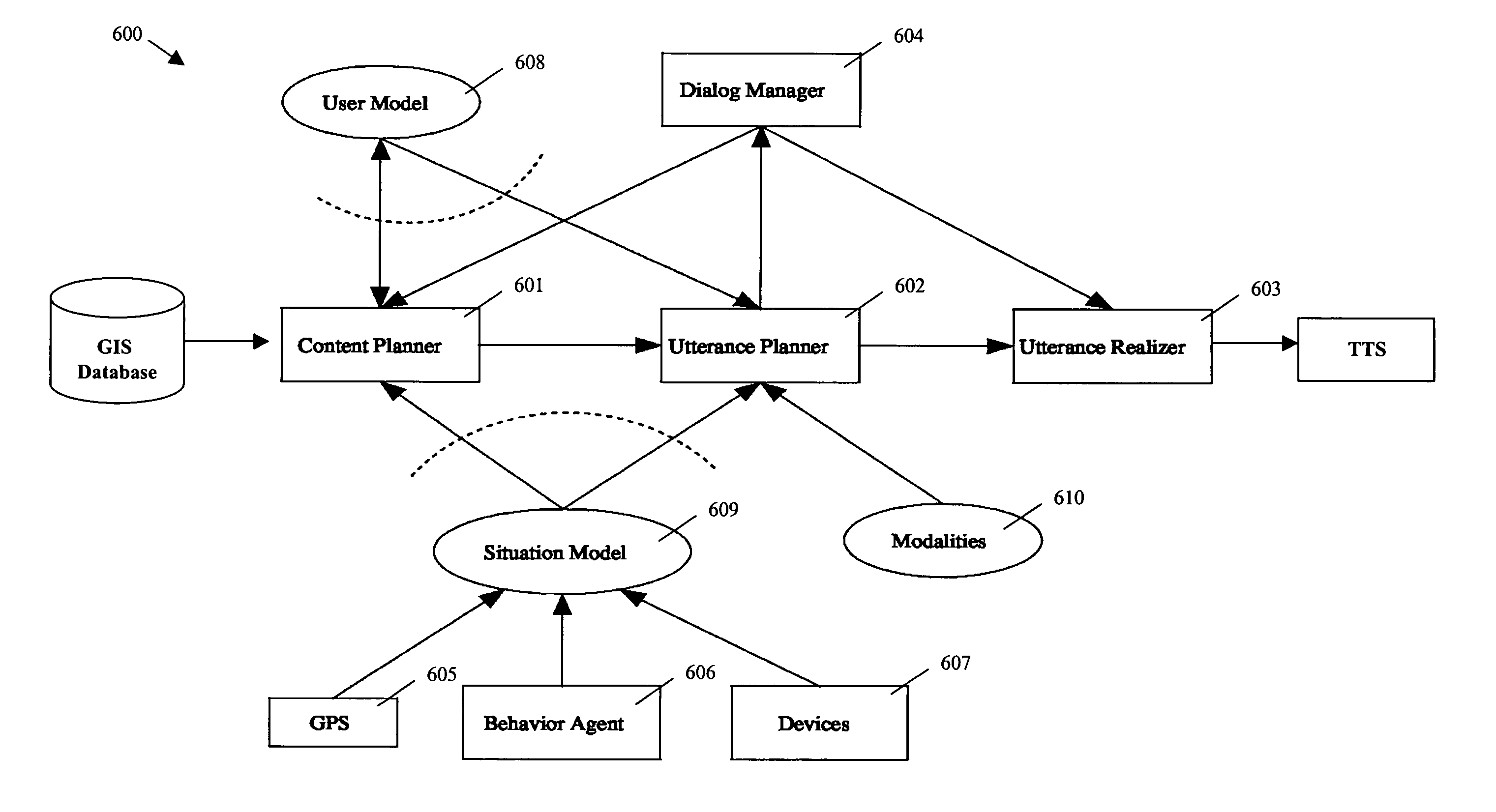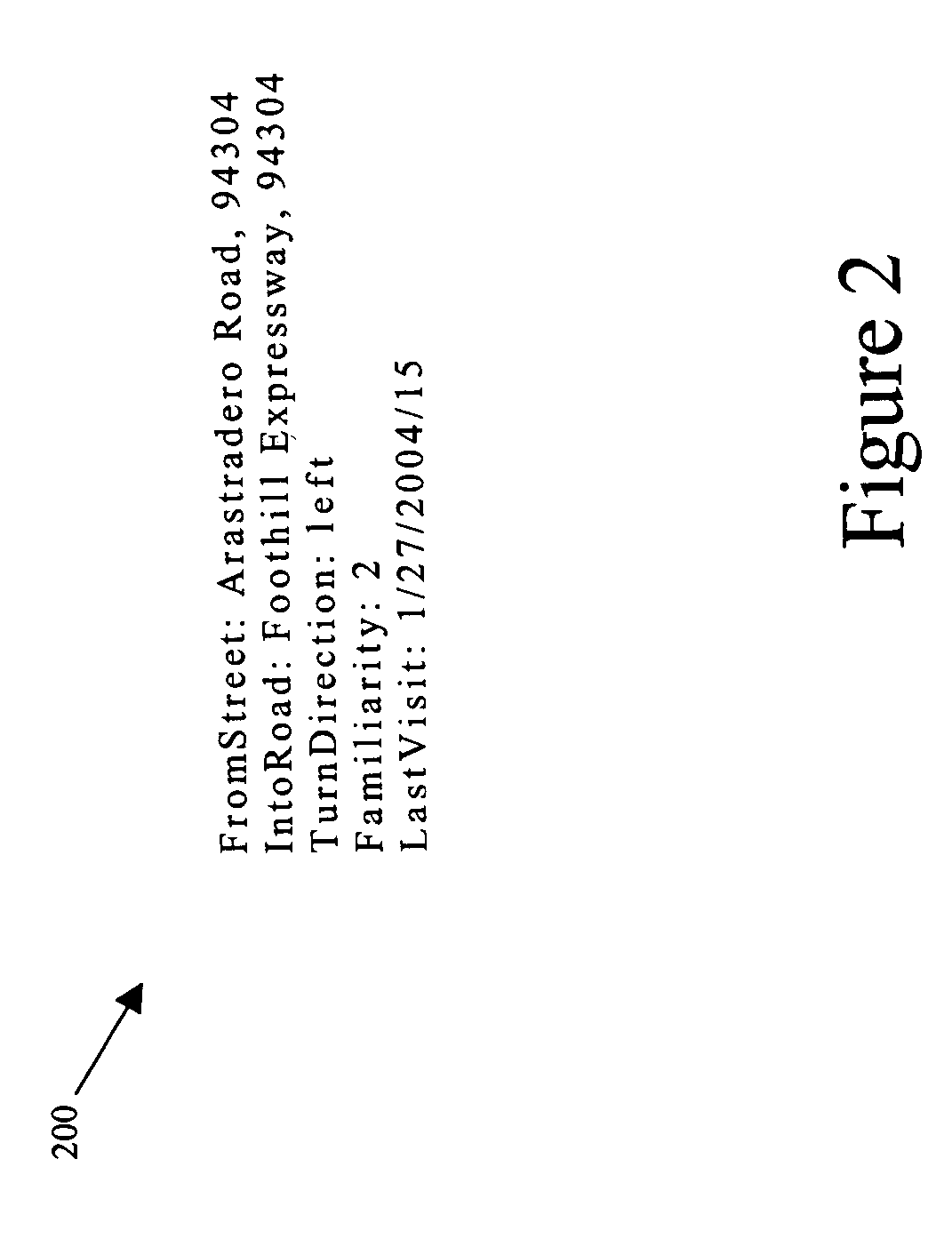Method and system for adaptive navigation using a driver's route knowledge
a technology of adaptive navigation and driver's knowledge, applied in traffic control systems, navigation instruments, instruments, etc., can solve the problems of not taking into account the external driving situation of commercially available systems, reducing the predictability of collaborative approaches, and not being able to learn and remember complicated sets of spoken commands. , to achieve the effect of enhancing the perception of dialog system intelligence, speeding up the market acceptance of technologies, and improving information presentation
- Summary
- Abstract
- Description
- Claims
- Application Information
AI Technical Summary
Benefits of technology
Problems solved by technology
Method used
Image
Examples
Embodiment Construction
Content-based Modeling
[0023]Since a navigation system in any given car may be used by the same driver for many times, there may be opportunity to collect a large amount of driver-specific data through both implicit observations and explicit interactions. For example, a GPS-based navigation system may maintain a history of all the places the driver has been to, and use this to generate hypotheses about the driver's route knowledge. Based on this knowledge, reasonable assumptions may be made about what the driver knows and predictions about what the driver needs to know. In this regard, evidence used to form the hypotheses may be gathered, for example, by implicit observation and explicit enquiry. In implicit observation, the driver's daily driving activities and use of clarification questions may provide useful information regarding the driver and what he may know. For example, if the driver has driven to a place without asking for help, it may be assumed that the driver is familiar ...
PUM
 Login to View More
Login to View More Abstract
Description
Claims
Application Information
 Login to View More
Login to View More - R&D
- Intellectual Property
- Life Sciences
- Materials
- Tech Scout
- Unparalleled Data Quality
- Higher Quality Content
- 60% Fewer Hallucinations
Browse by: Latest US Patents, China's latest patents, Technical Efficacy Thesaurus, Application Domain, Technology Topic, Popular Technical Reports.
© 2025 PatSnap. All rights reserved.Legal|Privacy policy|Modern Slavery Act Transparency Statement|Sitemap|About US| Contact US: help@patsnap.com



